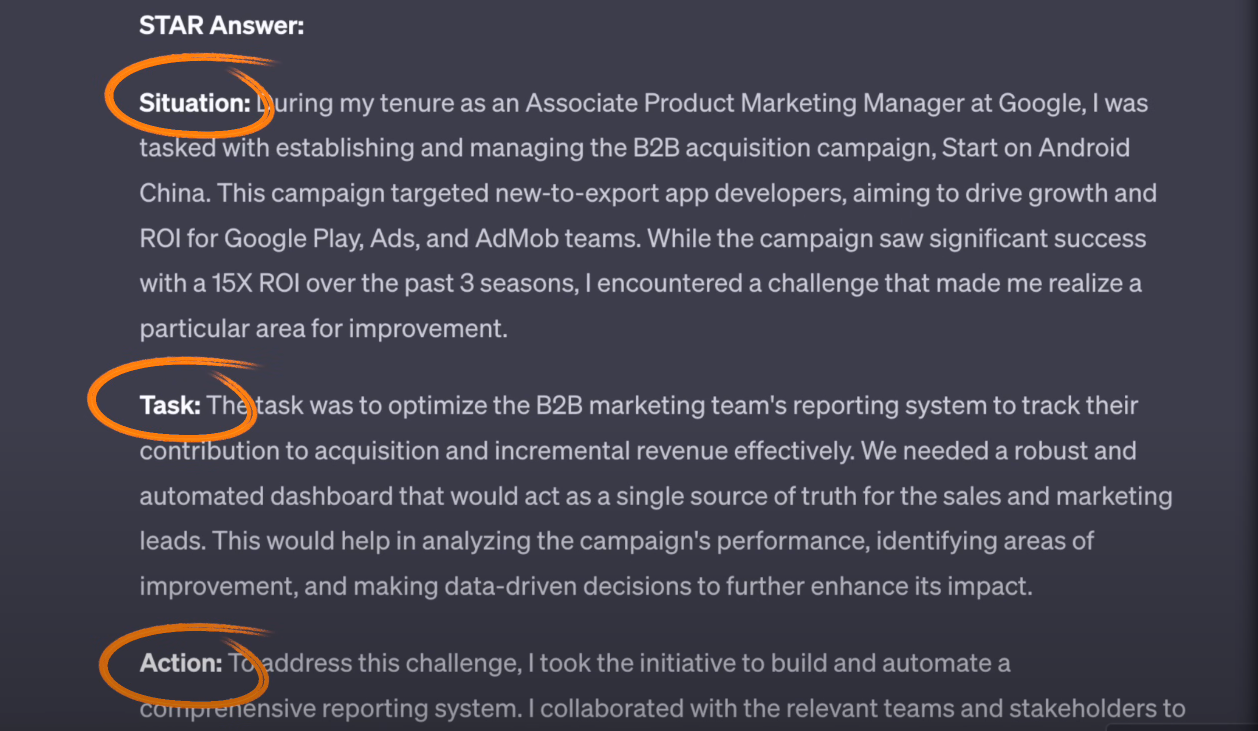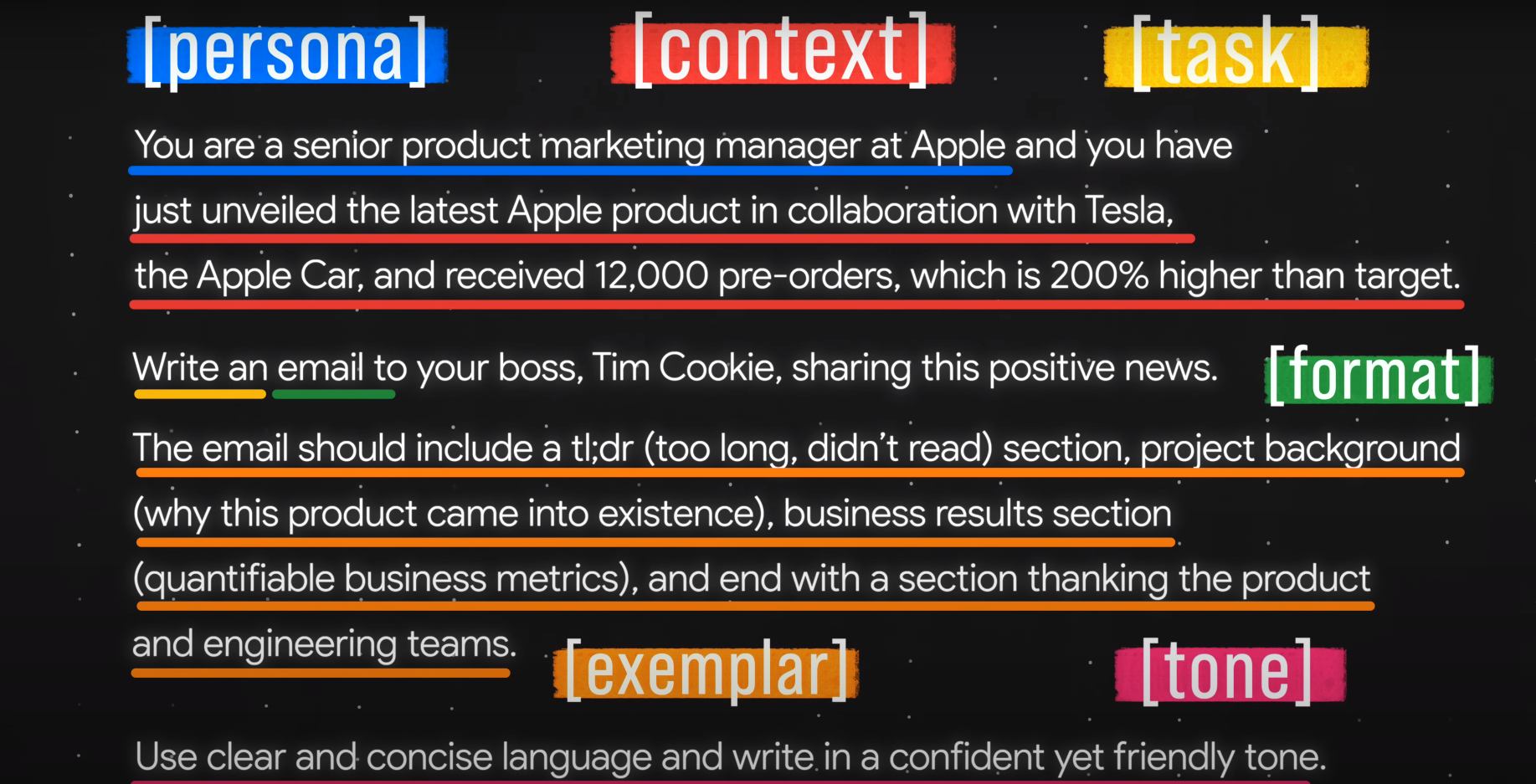Mastering Prompting on ChatGPT and Google Bard: The Only Formula You Need
Hello friends, If you’re new here, my name is Rajat Rastogi. A couple of months ago, I realized that prompting is an important skill to learn, but I wasn’t exactly sure why some prompts generate outputs that are super generic while others give you precisely what you’re looking for.
Since then, I’ve spent hundreds of hours taking prompt engineering courses and applying what I’ve learned in my daily life. In this article, I’m sharing the six building blocks that make up a good prompt so that you can use this formula to consistently generate high-quality outputs.
Understanding the Six Components of a Good Prompt
It’s critical to not only know what the six components are – task, context, exemplars, persona, format, and tone – but also understand that there’s an order of importance to these six components.
To illustrate what I mean, let’s use this simple example: “I’m a 70kg male. Give me a three-month training program.” The first part is context followed by the task. The reason why the task is higher up in the form of the hierarchy is if we just input the task without the context, there’s still some sort of meaningful output. But if we just give ChatGPT the context, nothing really happens.
In other words, it’s mandatory to have a task in your prompt. It’s important to include relevant context and exemplars. And it’s nice to have persona, format, and tone. When you think of writing your prompt, go down this mental checklist. This formula will act as a constant reminder for you to include just enough relevant information when writing prompts.
As you’ll see in this next part, you do not need all six components in every prompt to have a good output.
Breaking Down Each Building Block with Specific Examples

Task
The rule of thumb is to always start the task sentence with an action verb – generate, give, write, analyze, etc., and clearly articulate what your end goal is. It could be one simple task like generating a three-month training program or a complex three-step ask like analyzing hundreds of user feedback, sharing the top three takeaways, and categorizing the feedback based on the team responsible for following up.
Context
The second component, context, is the trickiest to get right because technically there’s an infinite amount of information you can give. So I found asking myself these three questions to be super helpful in coming up with just enough information to get a good result from ChatGPT:
- What’s the user’s background?
- What does success look like?
- What environment are they in?
Back to the workout example, we now have: “I’m a 70kg male looking to put on five kilograms of muscle mass over the next three months. I only have time to go to the gym twice a week and for one hour each session. Give me a three-month training program to follow.”
Could I have added more background information? Of course! But the key to staying productive with ChatGPT and Bard is giving just enough information to constrain the endless possibilities.
Exemplars
Moving over to the exemplars component – it’s just a fancy way of saying examples. Basically, all research on large language models (LLMs) has shown that including examples within the prompt drastically improves the quality of the output.
Starting with a simple example: “This is a poorly written bullet point from a resume.” We can now ask ChatGPT to rewrite this bullet point using this structure: “I accomplished X by measure Y that resulted in Z.” This is actually best practice by the way – so actually do this in your resume!
For example: “I lowered Hospital mortality rate by 10% by educating nurses.”
orders in the first 24 hours. You are tasked with writing a press release to announce this milestone. Use a professional and enthusiastic tone. Here’s an example of a press release: “Apple Inc. is thrilled to announce that our latest innovation, the Apple Car, has received an overwhelming response from customers worldwide with 12,000 pre-orders within the first 24 hours of unveiling.”
Interview Preparation: Answering “What’s Your Biggest Weakness?”

When preparing for an interview, it’s crucial to have a well-thought-out answer to the question, “What’s your biggest weakness?” Using the STAR (Situation, Task, Action, Results) answer framework can be helpful. Here’s an example:
Situation: In my previous role as a project manager, I realized that my biggest weakness was delegating tasks.
Task: I was responsible for leading a team and ensuring the successful completion of projects.
Action: I took up leadership training courses and started using project management tools to better assign tasks and track progress.
Result: This not only improved my delegation skills but also increased the team’s productivity by 20%.
Writing a Job Description
Writing a job description can be made easier by referencing an existing one. For instance, if you found a job description on LinkedIn that you liked, you could use it as a guide. The output will follow the same formatting and use professional language, saving you time.
The Importance of Persona
The persona component is essentially who you want ChatGPT and Bard to be. Think of someone you wish you had instant access to with the task you’re facing. If you’re working on a creative brief, that person might be a senior product marketing manager who’s great at storytelling.
Formatting Your Output
Visualize how exactly you want the end result to look like. For instance, if you’re dealing with user feedback, you might want ChatGPT to output a table with three headers: the original feedback, the team responsible for following up, and priority.
Setting the Tone
The tone is easy to understand but can be challenging to implement because we’re usually not very good at recalling potential adjectives and adverbs at a moment’s notice. So here’s a pro tip: tell ChatGPT the feeling you’re going for.
For example, if you’re writing an email to a team you haven’t worked with before and want to be taken seriously without coming off as too stuck up and cringy, you could say: “Use clear and concise language and write in a friendly yet confident tone.”
Email to Tim Cookie: Celebrating the Success of the Apple Car Launch

Dear Tim,
I hope this email finds you well. I’m writing to share some exciting news about our latest product, the Apple Car.
TL;DR
We’ve received an overwhelming response for the Apple Car with 12,000 pre-orders within the first 24 hours of unveiling, which is 200% higher than our target.
Project Background
The Apple Car came into existence as a result of our continuous commitment to innovation and customer satisfaction. Our goal was to create a product that not only showcases cutting-edge technology but also revolutionizes the way our customers perceive and interact with automobiles.

Business Results
I’m thrilled to report that we’ve received 12,000 pre-orders within the first 24 hours of unveiling the Apple Car. This is a significant milestone as it’s 200% higher than our target. It’s a testament to the hard work and dedication of our teams and the faith our customers have in us.
Acknowledgments
I would like to take this opportunity to express my heartfelt gratitude towards our Product and Engineering teams. Their tireless efforts and unwavering commitment have been instrumental in making this launch a resounding success.
Once again, thank you for your leadership and support. Here’s to many more milestones!
Best Regards,
[Your Name]



